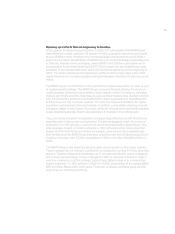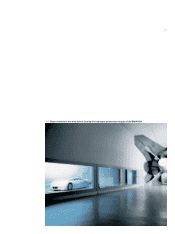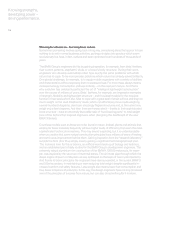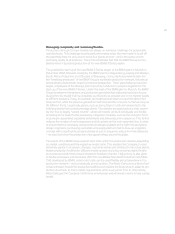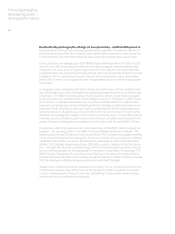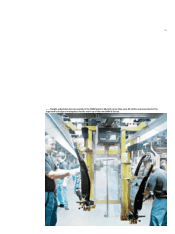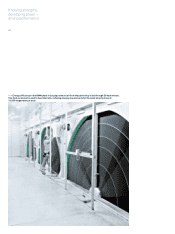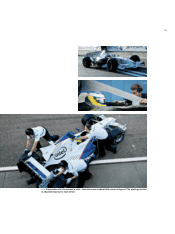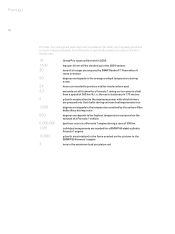BMW 2005 Annual Report Download - page 169
Download and view the complete annual report
Please find page 169 of the 2005 BMW annual report below. You can navigate through the pages in the report by either clicking on the pages listed below, or by using the keyword search tool below to find specific information within the annual report.21
Managing complexity and remaining flexible.
Production start-ups for new models are always an immense challenge for automobile
manufacturers. This challenge is particularly demanding when the new model is to roll off
the assembly lines not only at one, but at four plants at once – and in the same uncom-
promising quality at all locations. This is the remarkable feat that the BMW Group accom-
plished when it launched production of the new BMW 3 Series sedan.
The production start-up of the new BMW 3 Series began at the BMW plant in Munich in
December 2004, followed closely by the BMW plants in Regensburg, Leipzig and Rosslyn,
South Africa. Production at a fifth plant in Shenyang, China, started somewhat later. For
the “breathing structures” of the BMW Group’s worldwide production network, this was an
extraordinarily deep breath requiring intensive preparation. Three years before production
began, employees of the Rosslyn plant had come to Munich to prepare together for the
start-up of the new BMW 3 Series. Under the lead of the BMW plant in Munich, the BMW
Group development engineers and production specialists had elaborated solutions
for pro-
ducing the new model in all its complexity as efficiently as possible and in the highest
quality
at different locations.Today, for example, all model variants share one and the same front
body section, while the previous generation had three and the one prior to that as
many as
30 different fronts. Large body pieces, such as doors, flaps or roofs are transported
to the
individual plants from central pressings plants. The vehicles are produced on a main assem-
bly line that is largely “variant neutral”, where all models are built individually and flexibly
according to the level of order processing. Integration modules, such as the cockpit or front-
end, are pre-assembled separately beforehand and delivered just-in-sequence. This further
reduces the number of work sequences and of variants on the main assembly line. In order
to ensure that the necessary components are always available at the right time and place,
design engineers, purchasing specialists and supply planners had to draw up a logistics
concept with a significantly increased share of just-in-sequence and just-in-time deliveries
– no easy task since the production chain goes halfway around the globe.
The plants of the BMW Group support each other within the production network, depending
on market conditions and the respective model cycle. This enables the Company to react
extremely quickly to economic changes, customer wishes and demand. In the actual plants,
flexible production facilities for different model variants and units, as well as highly flexible
structures and work times ensure maximum freedom of action. High priority is also given
to flexible processes and structures. With the new Mobile Standard Production Cell (Mobi-
Cell) developed by BMW, entire robot cells can be used flexibly almost anywhere in the
production network – not just statically at one location. The Mobi-Cell acts as a kind of uni-
versal extension module for production facilities and enables the body shop to adapt its pro-
duction structures to meet market requirements within a very short time. In other words,
Mobi-Cells give the Company a little more air whenever and wherever it wants to take a deep
breath.






